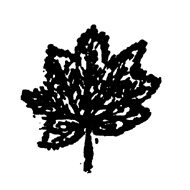WALLACE W HANSEN
Native Plants of the Northwest
Native Plant Nursery & Gardens
2158 Bower Ct S.E., Salem, Oregon 97301 E-Mail:
Wallace W Hansen
PHONE (503)581-2638 FAX(503)581-9957

WALLACE W HANSENNative Plants of the NorthwestNative Plant Nursery & Gardens2158 Bower Ct S.E., Salem, Oregon 97301 E-Mail:
Wallace W Hansen |

|
| Information about Wallace W Hansen Northwest Native Plant Nursery & Gardens: Business Information (Ordering, etc.) | |
Updated October 24, 2003 |
Wallace Hansen Celebrates Lewis and Clark's Bicentennial |
|
|
|
|
Botanical Discoveries of the Lewis and Clark ExpeditionVine Maple (Acer circinatum)Collected at the Columbia River Narrows in Oregon, October 20, 1805One of the most useful as well as beautiful Northwest Native shrubs or small trees, the Vine Maple (Acer circinatum) played a part in the daily lives of Native Peoples. The wood of this plant is small in diameter, but it is very dense and hard and when fresh it is very flexible. It was used for all manner of small implements for food and as tools, it made very sturdy and beautiful showshoe frames or drum hoops, carrying frames, as the form on which dreamcatchers were tied. Today, artists who make "twig" furniture make extensive use of Vine Maple for their creations. We offer Vine Maples in several sizes at special prices during our Fall Containerized Sale. You'll also find many other attractive and desirable Northwest Native shrubs and trees during this annual sale. |
 Vine Maple leaf from Captain Lewis' journal |
At this time in 1804:
It's interesting to read how the meetings with Native Peoples were conducted and also how Captain Clark viewed the people. I hardly think "ignorant" is a fitting descriptor of any peoples, especially those who have lived quite successfully (and for the most part, quite well) without assistance or guidance from intruders who come bearing gifts of dubious value. The mother who saved her son was surely guided to do so by Spirit. The blend of the child's blood was probably a fact pointed out to the Corps as an opportune way to gain favor with the white men rather than a true belief of the Peoples. |
Current events:From the Lewis & Clark Bicentennial Oregon website at http://www.lcbo.net/: July 13 - November 15, 2003: Reflecting On Lewis & Clark: Contemporary Native American Viewpoints, Maryhill Museum of Art. Curated by Pat Courtney Gold, Wasco Nation of the Warm Springs Confederated Tribes of Oregon, this exhibit features contemporary artwork by nationally recognized Native American artists who have created paintings, sculptures, and traditional artifacts that interpret and express their thoughts on the Lewis and Clark expedition of 1803-06. Reception on July 13 will include a solo flute performance by James Greeley (Hopi/Wasco) and traditional tribal dances by Native American dancers. Contact: Maryhill Museum of Art, (509) 773-3733. |
|
|
|
End
of the Oregon Trail Interpretive Center
Location: 1726 Washington Street, Oregon City, OR 97045 (503) 657-9336 (503) 557-8590 End of the Oregon Trail Interpretive Center Website staff@endoftheoregontrail.org Description: The End of the Oregon Trail Interpretive Center was built in 1995 on the former Donation Land Claim of the first elected governor of the Oregon Country, George Abernethy. A merchant and miller by trade, Abernethy had a vested interest in the continued growth of Oregon City, so he permitted newly arrived emigrants to park their wagons, graze their oxen, and set up camp on a meadow behind his house. That meadow came to be called Abernethy Green, and for many of the early Oregon Trail emigrants, it truly was the Trail's end. |
|
Directions
and/or Additional Information:
The End the Oregon Trail Interpretive
Center is easy to find, as the geology and patterns of settlement within
the Willamette Valley have dictated the routes of major roads from Indian
footpaths to modern highways. The simplest way to reach the Interpretive
Center is to take Interstate 205 to Exit 10, which is signed for Park
Place, Molalla, and State Route 213, the Trail's End Highway. Once off the
Interstate, turn right at the first stoplight. The Interpretive Center is
about half a mile down the road. You literally can't miss "the Big
Wagons" on your left at 1726 Washington Street.
Alternative approaches are via State Routes 213, 99-E, and 43. The Interpretive Center is just off the end of SR 213 -- turn left at the last light before the Interstate. Taking 99-E or 43 gives you the option of cutting over to Washington Street on the surface streets if you're familiar with Oregon City, but it's easier to take northbound I-205 to Exit 10 from both roads. Here's a handy tip for those arriving on 99-E: the entrance ramp from 99-E is a continuous lane that becomes the exit ramp for SR 213, so you are spared from having to merge with the through traffic on the Interstate. |
|
|
Back Issues:To see back issues of Wallace Hansen Celebrates Lewis and Clark, click on this link to jump to the index. |
Commemorative Painting by Heidi Hansen:The illustrated map below was created by renowned botanical artist Heidi D. Hansen especially for this website. Done in ink and watercolors, Heidi shows many of the plants Captain Lewis documented overlaid atop a map showing a portion of the journey. (Click on image for large view). All the plants pictured are available from Wally Hansen! See our online catalog for more information. |
|
|
|
|
|
|
|
|
|
Click here to return to my Home Page |
|
Questions about plants, click here: Regular Email to Wally To order, click here: Secure Email to Wally |
|
|
Comments or questions about our web site, click here: Webmaster |